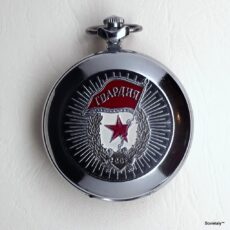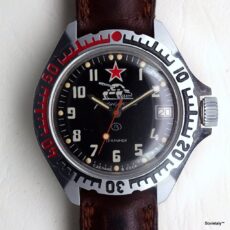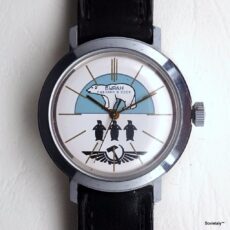Watch enthusiasts often encounter abbreviations in Cyrillic for days of the week and months on Russian and Soviet watches. This guide provides a clear outline of the correspondence of these abbreviations in Cyrillic, English, French, Spanish, Italian, Japanese, Chinese, and Arabic. Additionally, we will explore the calendar used in the Soviet Union and some historical curiosities. Finally, we will explain why French days of the week are sometimes used on Japanese watches.
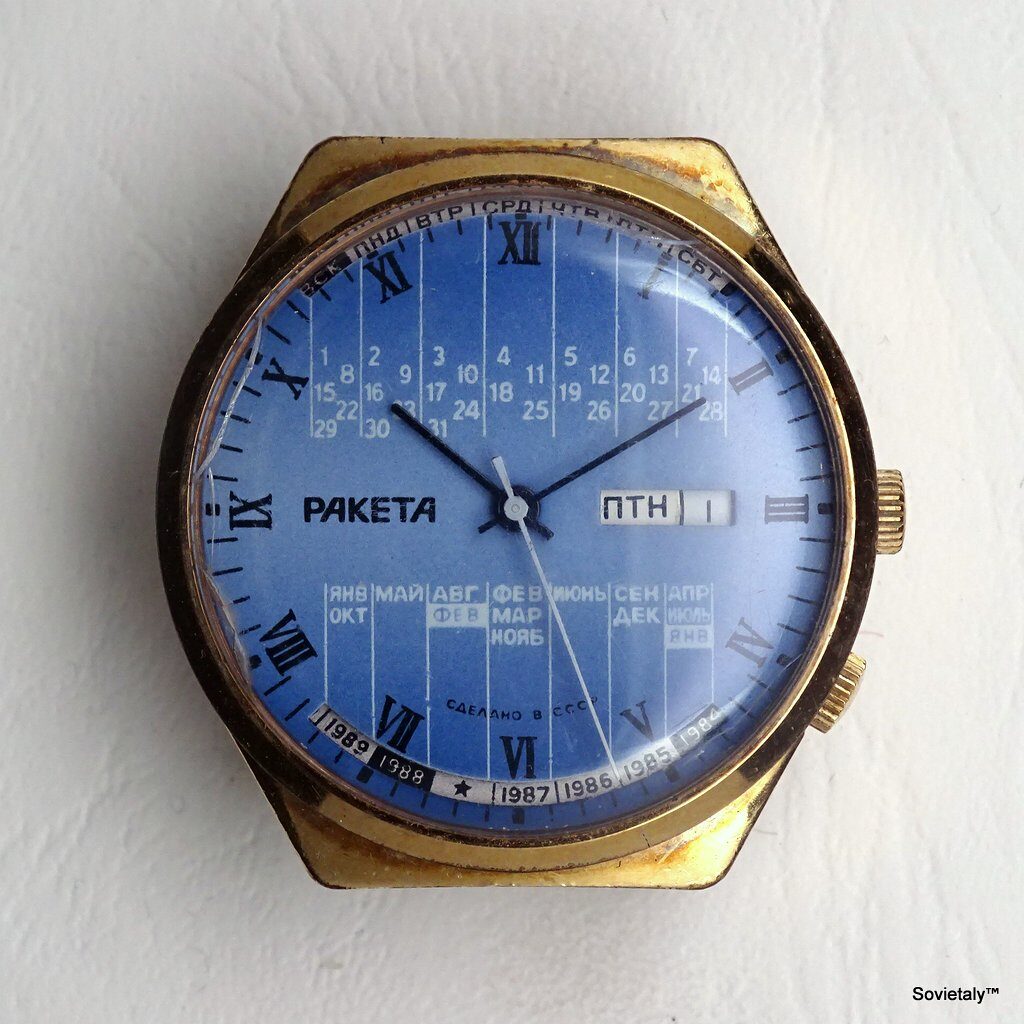
Days of the Week
Here is a table showing the correspondence of the abbreviations for the days of the week:
| Language | Monday | Tuesday | Wednesday | Thursday | Friday | Saturday | Sunday |
|---|---|---|---|---|---|---|---|
| Russian | ПНД (PND) | ВТР (VTR) | СРД (SRD) | ЧТВ (ChTV) | ПТН (PTN) | СБТ (SBT) | ВСК (VSK) |
| English | MON | TUE | WED | THU | FRI | SAT | SUN |
| French | LUN | MAR | MER | JEU | VEN | SAM | DIM |
| Spanish | LUN | MAR | MIÉ | JUE | VIE | SÁB | DOM |
| Italian | LUN | MAR | MER | GIO | VEN | SAB | DOM |
| Japanese | 月 (Getsu) | 火 (Ka) | 水 (Sui) | 木 (Moku) | 金 (Kin) | 土 (Do) | 日 (Nichi) |
| Chinese | 一 (Yī) | 二 (Èr) | 三 (Sān) | 四 (Sì) | 五 (Wǔ) | 六 (Liù) | 日 (Rì) |
| Arabic | اث (ITH) | ثل (THL) | أر (AR) | خم (KHM) | جم (JM) | سب (SB) | أحد (AHD) |
Months of the Year
Here is a table showing the correspondence of the abbreviations for the months of the year:
| Language | January | February | March | April | May | June | July | August | September | October | November | December |
|---|---|---|---|---|---|---|---|---|---|---|---|---|
| Russian | ЯНВ (YAnV) | ФЕВ (FEV) | МАР (MAR) | АПР (APR) | МАЙ (MAY) | ИЮН (IYuN) | ИЮЛ (IYuL) | АВГ (AVG) | СЕН (SEN) | ОКТ (OKT) | НОЯ (NOYa) | ДЕК (DEK) |
| English | JAN | FEB | MAR | APR | MAY | JUN | JUL | AUG | SEP | OCT | NOV | DEC |
| French | JAN | FÉV | MAR | AVR | MAI | JUN | JUI | AOÛ | SEP | OCT | NOV | DÉC |
| Spanish | ENE | FEB | MAR | ABR | MAY | JUN | JUL | AGO | SEP | OCT | NOV | DIC |
| Italian | GEN | FEB | MAR | APR | MAG | GIU | LUG | AGO | SET | OTT | NOV | DIC |
| Japanese | 1月 (Ichigatsu) | 2月 (Nigatsu) | 3月 (Sangatsu) | 4月 (Shigatsu) | 5月 (Gogatsu) | 6月 (Rokugatsu) | 7月 (Shichigatsu) | 8月 (Hachigatsu) | 9月 (Kugatsu) | 10月 (Jūgatsu) | 11月 (Jūichigatsu) | 12月 (Jūnigatsu) |
| Chinese | 一月 (Yīyuè) | 二月 (Èryuè) | 三月 (Sānyuè) | 四月 (Sìyuè) | 五月 (Wǔyuè) | 六月 (Liùyuè) | 七月 (Qīyuè) | 八月 (Bāyuè) | 九月 (Jiǔyuè) | 十月 (Shíyuè) | 十一月 (Shíyīyuè) | 十二月 (Shí’èryuè) |
| Arabic | ينا (YNA) | فبر (FBR) | مار (MAR) | أبر (ABR) | ماي (MAY) | ينو (YNU) | يول (YUL) | أغس (AGS) | سبم (SPM) | أكت (AKT) | نوڤ (NOV) | ديس (DIS) |
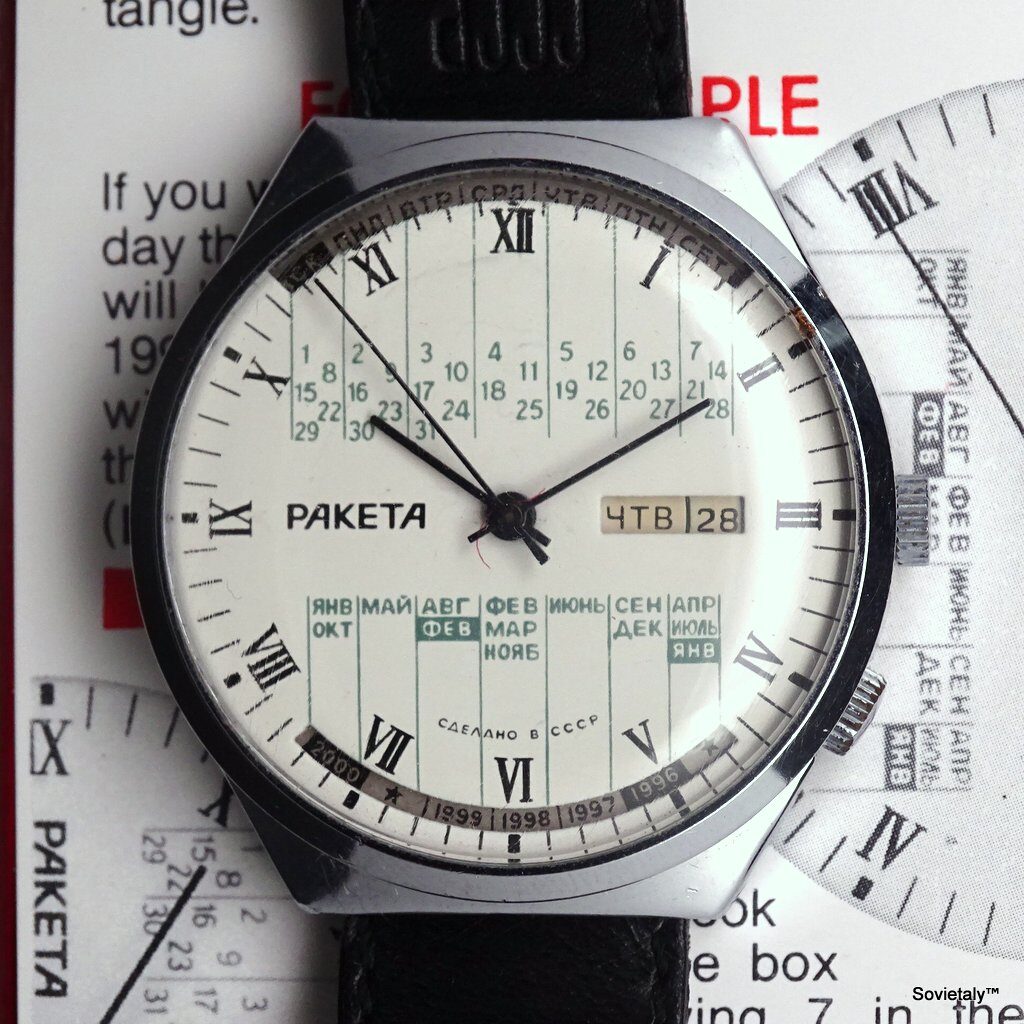
The Soviet Union Calendar
The calendar used in the Soviet Union after the October Revolution underwent several changes. Initially, Russia used the Julian calendar, which differed from the Gregorian calendar adopted by most of the Western world. After the October Revolution of 1917, the Soviet government decided to adopt the Gregorian calendar in 1918 to better align with the rest of the world.
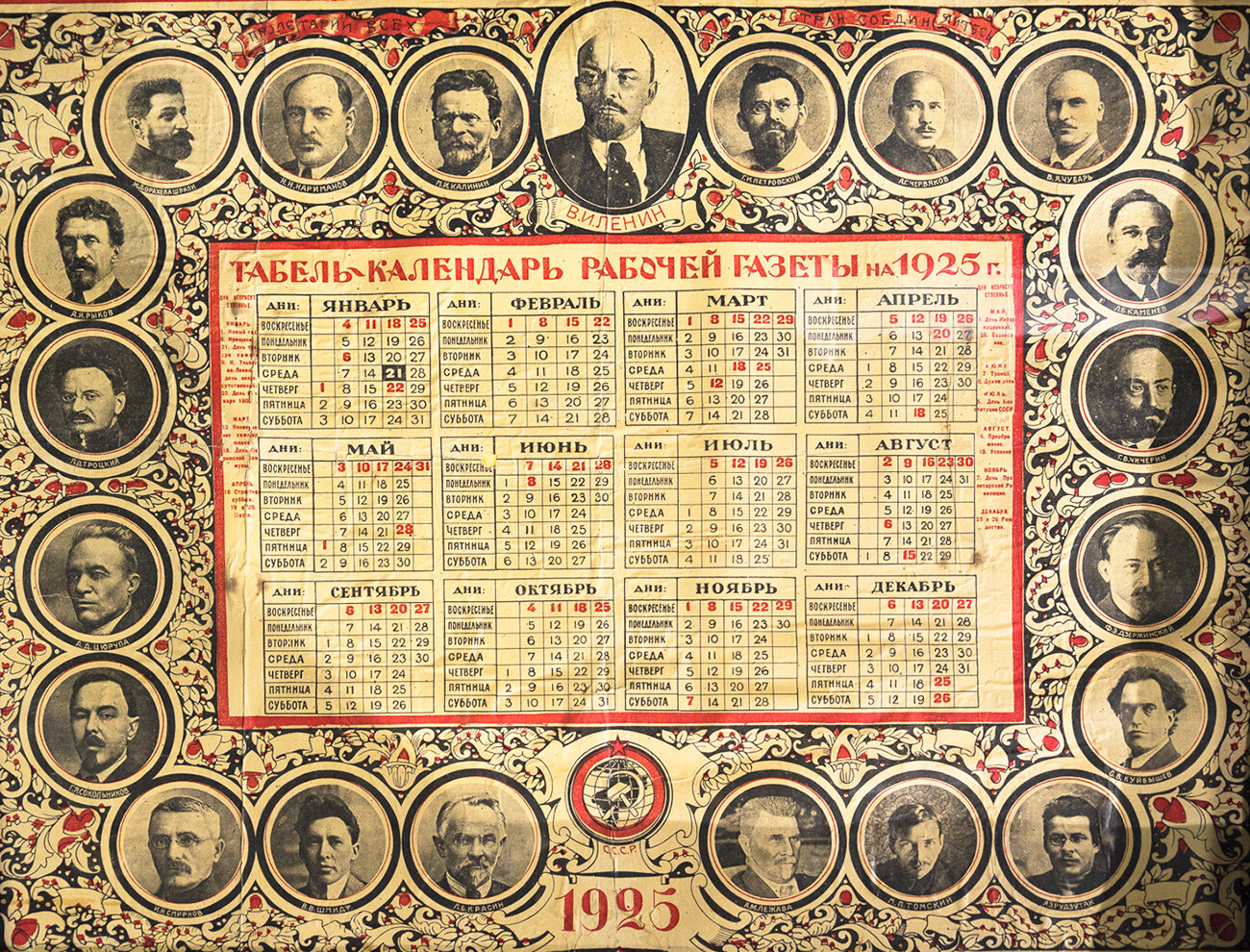
The October Revolution
An interesting point is that the October Revolution did not actually occur in October according to the Gregorian calendar. The revolution began on October 25, 1917, according to the Julian calendar, but this date corresponds to November 7, 1917, in the Gregorian calendar. Therefore, despite being called the “October Revolution,” the event actually took place in November according to the current calendar.
Abbreviations on Soviet Watches for Internal Market
On some Soviet watches intended for the internal market with Cyrillic inscriptions, the day of the week was abbreviated to two letters and preceded by a number. This system used the number of the day in the week followed by the first two letters of the day in uppercase. For example, Sunday was “7 ВС”. This method helped distinguish the days of the week, particularly in regions where the Cyrillic script was not commonly used, making it easier for people to identify the days.
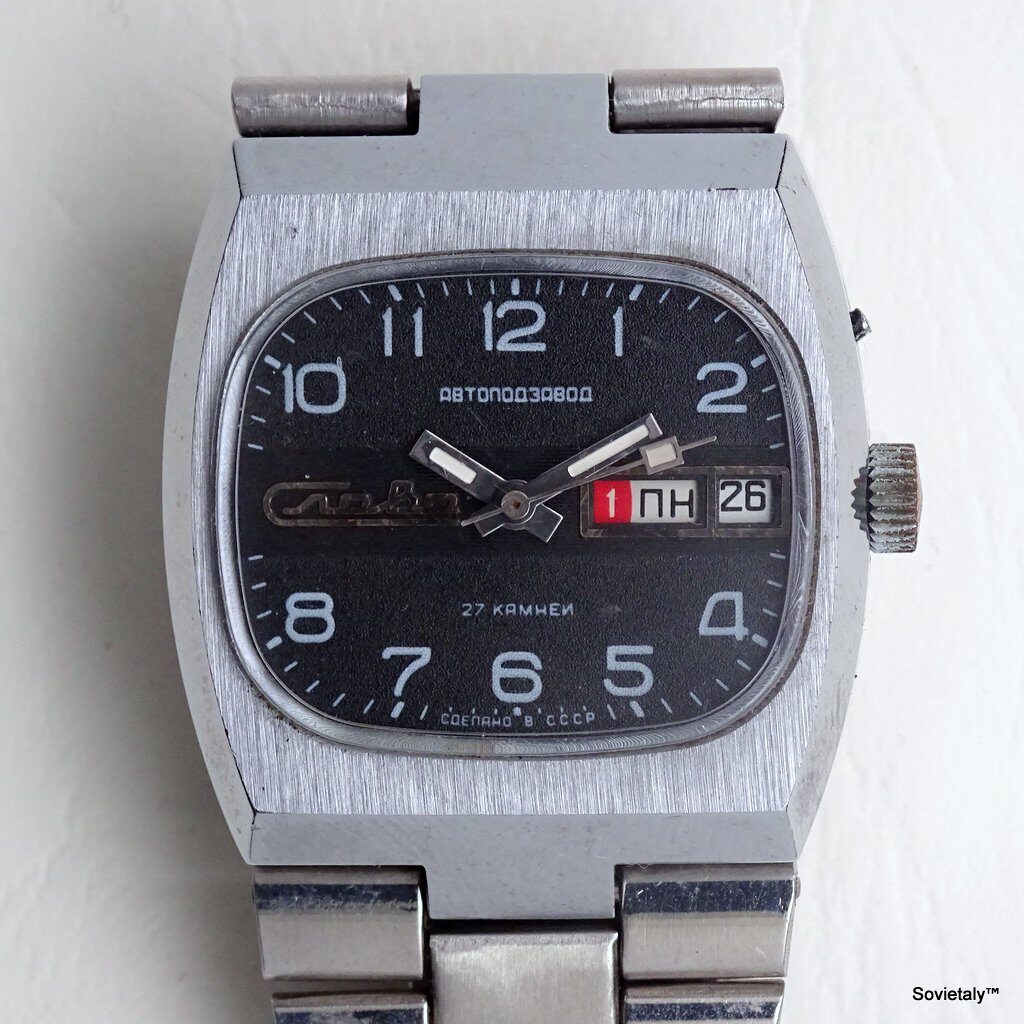
Here is the table illustrating this system:
| Day | Abbreviation |
|---|---|
| Monday | 1 ПН |
| Tuesday | 2 ВТ |
| Wednesday | 3 СР |
| Thursday | 4 ЧТ |
| Friday | 5 ПТ |
| Saturday | 6 СБ |
| Sunday | 7 ВС |
Days of the Week in Japanese
A curious aspect is that in Japan, the days of the week are sometimes indicated with the initials of the days in French on watches. This stems from a cultural and linguistic influence that saw the introduction of the French language into various Japanese sectors during the Meiji period, when Japan was modernising and seeking to emulate various aspects of Western cultures.
Conclusions
Understanding the abbreviations for the days of the week and the months on watches in different languages is essential for proper use and to avoid confusion. We hope this guide helps you better understand these correspondences and explore a bit of the history of Soviet calendars.

